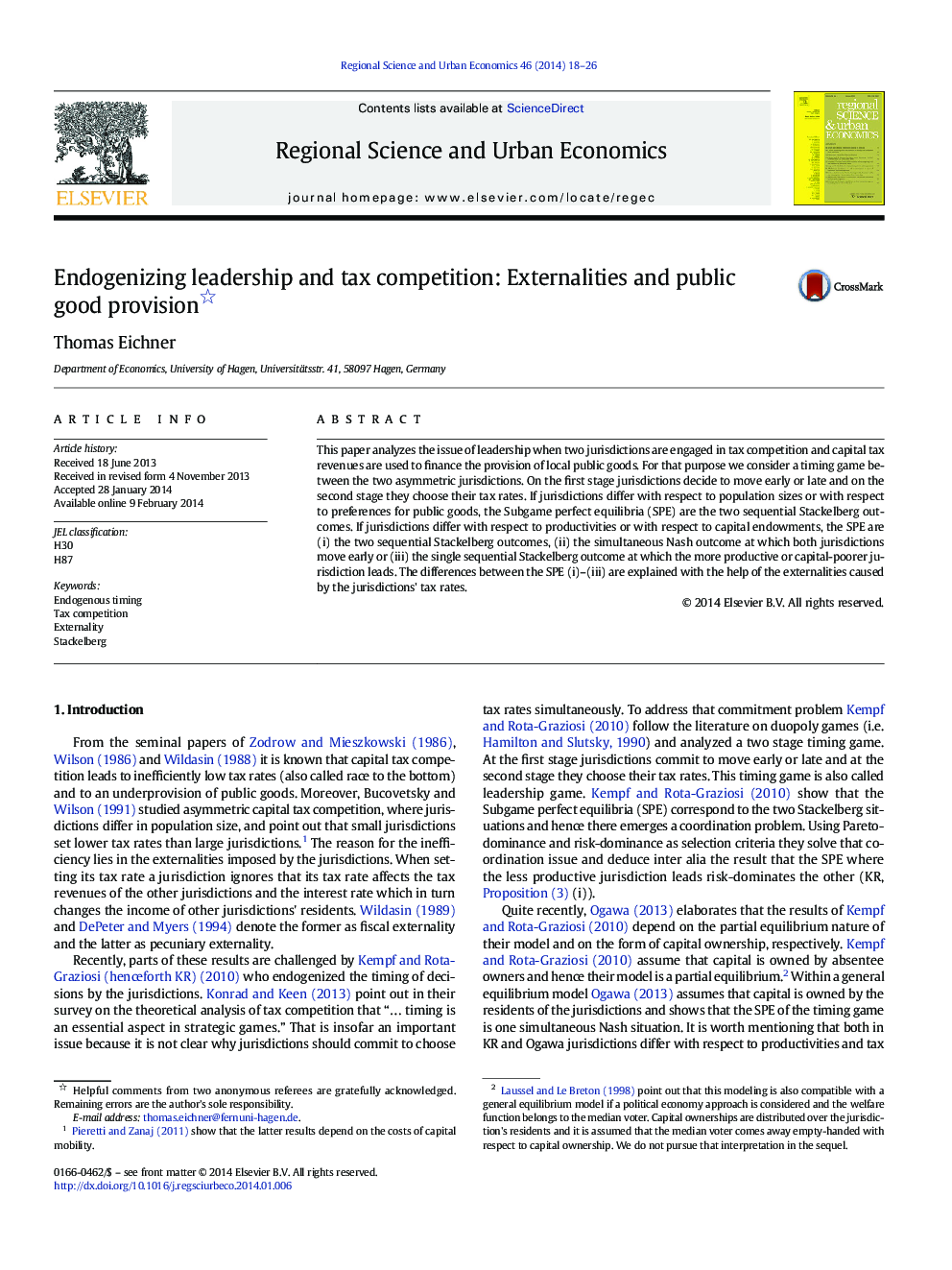| Article ID | Journal | Published Year | Pages | File Type |
|---|---|---|---|---|
| 980728 | Regional Science and Urban Economics | 2014 | 9 Pages |
•We analyze leadership in tax competition with public good provision.•A timing game between two asymmetric jurisdictions is analyzed.•There exist three different Subgame perfect equilibria of the timing game.
This paper analyzes the issue of leadership when two jurisdictions are engaged in tax competition and capital tax revenues are used to finance the provision of local public goods. For that purpose we consider a timing game between the two asymmetric jurisdictions. On the first stage jurisdictions decide to move early or late and on the second stage they choose their tax rates. If jurisdictions differ with respect to population sizes or with respect to preferences for public goods, the Subgame perfect equilibria (SPE) are the two sequential Stackelberg outcomes. If jurisdictions differ with respect to productivities or with respect to capital endowments, the SPE are (i) the two sequential Stackelberg outcomes, (ii) the simultaneous Nash outcome at which both jurisdictions move early or (iii) the single sequential Stackelberg outcome at which the more productive or capital-poorer jurisdiction leads. The differences between the SPE (i)–(iii) are explained with the help of the externalities caused by the jurisdictions' tax rates.
